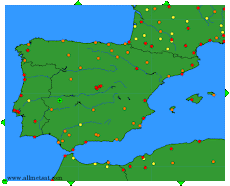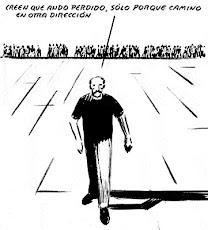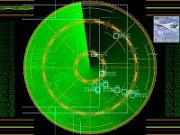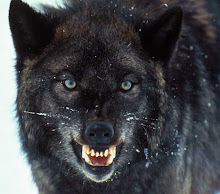lunes, 9 de septiembre de 2013
AEA RECOMMENDATIONS FOR DE-ICING / ANTI-ICING: A SKYBRARY ARTICLE
Adjuntamos artículo de SKYbrary sobre las recomendaciones de la AEA (Asociación de Aerolíneas Europeas) para el deshielo y para evitar la formación de hielo de las aeronaves que se encuentran en superficie.
AEA Recommendations for De-icing/Anti-Icing
Source: www.skybrary.aero
Categories: Ground Operations, Operational Issues
Description
The Association of European Airlines publishes recommendations for de-icing/anti-icing of aircraft on the ground.
AEA Recommendations for De-Icing/Anti-Icing of Aircraft on the Ground
Edition 28 of this guide was published in July 2013.
AEA Training Recommendations and background Information for De-Icing/Anti-Icing Aeroplanes on the Ground
Edition 9 of this guide was published in August 2012 [note: this was not updated in 2013]
Related articles were not included but are available in the skybrary article.
De los dos documentos, cuya lectura recomendamos, quisiéramos destacar la misión y los objetivos del Grupo de Trabajo creado al efecto por las siguientes compañías aéreas: Adria Airways, Air France, Austrian Airlines, British Airways, Finnair, KLM, Lufthansa, SAS, Virgin Atlantic y aprobado por el Comité Técnico y de Operaciones de la AEA (AEA’s Technical & Operations Committee).
Así en el primer documento, AEA Recommendations for De-Icing/Anti-Icing of Aircraft on the Ground, tenemos:
Recommendations for De-icing/Anti-icing Aeroplanes on the Ground
Mission Statement
The AEA De-icing/Anti-icing Working Group is the European focal point for the continuous development of safe, economical and environmentally friendly standards and procedures for the de-icing/anti-icing of aeroplanes on the ground in conjunction with related international standards organizations.
Terms of Reference
Promote and develop safe practices, effective procedures and improved technology related to aeroplane ground operations in winter conditions to ensure the highest possible levels of safety for passengers, flight crew and ground personnel.
Develop a set of commonly agreed recommended practices and procedures for the de-icing/anti-icing of aeroplanes on the ground, to reflect current industry best practice.
Publish these recommendations as the document ‘AEA Recommendations for De-icing/Anti-icing Aeroplanes on the Ground’.
Update the document ‘AEA Recommendations for De-icing/Anti-icing Aeroplanes on the Ground’, as required, to ensure continued compliance with all relevant standards and regulatory requirements, and to ensure that it continues to reflect current industry best practice.
Develop standards and specifications related to the de-icing/anti-icing of aeroplanes on the ground in conjunction with international standards organizations.
Prepare training material for aeroplane ground de-icing/anti-icing purposes.
Harmonize with other organisations in the aeroplane ground de-icing/anti-icing field (for example SAE, ISO, IATA, ICAO and regulatory authorities).
Assess the environmental impact of processes and materials used for aeroplane ground de-icing/anti-icing, and promote measures to reduce the overall environmental impact of aeroplane ground operations in winter conditions.
Y en el segundo documento, AEA Training Recommendations and background Information for De-Icing/Anti-Icing Aeroplanes on the Ground, tenemos:
Training Recommendations and Background Information for De-Icing /Anti-Icing of Aeroplane on the Ground
Mission Statement
The AEA De-icing/Anti-icing Training Working Group is the European focal point for the continuous development of safe, economical and universal training standards and procedures for the de-icing/anti-icing of aeroplane on the ground in conjunction with related international standards organizations.
Terms of Reference
Promote and develop safe practices, effective procedures and improved technology related to training of aeroplane ground operations in winter conditions to ensure the highest possible levels of safety for passengers, flight crew and ground personnel.
Develop a set of commonly agreed recommended training practices and procedures for the de-icing/antiicing of aeroplane on the ground, to reflect current industry best practice. Publish these recommendations as the document ‘AEA Training Recommendations and Background Information for De-Icing / Anti-Icing of Aeroplane on the Ground’.
Update the document ‘AEA Training Recommendations and Background Information for De-Icing / Anti-Icing of Aeroplane on the Ground’, as required, to ensure continued compliance with all relevant standards and regulatory requirements, and to ensure that it continues to reflect current industry best practice.
Develop training standards and specifications related to the de-icing/anti-icing of aeroplane on the ground in conjunction with international standards organizations.
Prepare training material for aeroplane ground de-icing/anti-icing purposes.
Harmonize with other organisations in the aeroplane ground de-icing/anti-icing field (for example SAE, ISO, IATA, ICAO and regulatory authorities).
Y nos fijamos en el siguiente texto que aparece en ambos documentos:
Promote and develop safe practices, effective procedures and … to ensure the highest possible levels of safety for passengers, flight crew and ground personnel.
Es decir:
Promover y desarrollar prácticas seguras, procedimientos efectivos y … para asegurar los niveles más altos de seguridad para pasajeros, tripulaciones y personal de tierra.
Y lo extraño es que no hemos visto ninguna referencia al Aeropuerto de Madrid-Barajas, cuando en este aeródromo las zonas de deshielo se encuentran en los finales de algunas pistas. Así la zona de deshielo de la pista 36R se encuentra en los finales de las pistas 32R y 18L, y la zona de deshielo de la pista 36L se encuentra en los finales de las pistas 32L y de 18R. Esto puede comprobarse en los planos que hay disponibles en la web de AENA en la Información aeronáutica del Aeropuerto de Madrid-Barajas
Quiere decir esto que si alguna aeronave se pasa de frenada y efectúa un aterrizaje largo, podría impactar contra aquéllas que estén en la zona de deshielo.
Convendría por lo tanto que la AEA (Asociación de Aerolíneas Europeas) lo incluyese en las próximas actualizaciones de sus documentos; mientras tanto, advertimos a los pilotos de las compañías aéreas que todavía operan en el Aeropuerto de Madrid-Barajas de este riesgo invernal.
Suscribirse a:
Enviar comentarios (Atom)


















No hay comentarios:
Publicar un comentario